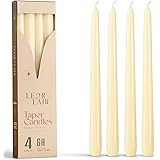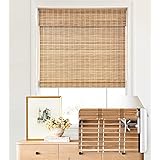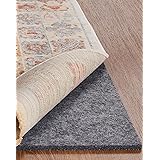With urban living spaces becoming increasingly compact, many homeowners face the perennial challenge of maximizing functionality and style in their kitchens. In fact, a recent survey indicated that over 60% of city dwellers feel their kitchen space is inadequate. While the video above offers fantastic, easy-to-implement ideas for transforming your compact culinary hub, we’re diving even deeper into the intricacies of small kitchen design, providing expert insights and practical strategies to elevate your space.
Mastering Light and Color in Small Kitchen Design
As highlighted in the video, the strategic use of light colors forms the bedrock of effective small kitchen design. These hues possess a higher Light Reflective Value (LRV), meaning they bounce more light around the room. An LRV scale, ranging from 0 (absolute black, absorbing all light) to 100 (pure white, reflecting all light), guides designers in selecting optimal shades. Selecting a color with an LRV of 70 or higher can dramatically enhance brightness, making the room feel larger and more open.
Beyond walls and cabinetry, consider the ceiling. Painting it a crisp white amplifies the perception of height, creating an airy expanse. Conversely, if your heart desires a splash of color, opt for muted pastels or desaturated tones with a high LRV. These soft shades maintain uniformity and prevent the space from feeling visually chopped. For instance, a pale sage green or a sky blue can introduce personality without overwhelming the room, reflecting natural light beautifully. Ensure you check the LRV on the paint swatch to make an informed decision that truly maximizes your kitchen’s natural illumination.
The Versatility of Mobile Kitchen Islands for Space Optimization
A mobile kitchen island is an indispensable asset in the realm of small kitchen design, fundamentally addressing the common pain point of insufficient counter space. Its inherent versatility allows it to morph from a food prep area to an informal dining spot, or even a serving station during entertaining. Imagine preparing a meal with ample room, then simply wheeling your island to the side to create an open pathway or to serve guests in an integrated living space.
When selecting a mobile island, precise measurements are paramount. Ensure it provides adequate working surface without impeding traffic flow. Materials range from rustic butcher block tops, which offer durable cutting surfaces, to sleek stainless steel, known for its hygienic and modern appeal. Many designs also incorporate built-in storage, such as shelving for cookbooks, drawers for utensils, or even integrated trash bins, making them powerhouse organizers. This multifunctional approach is a cornerstone of intelligent small kitchen design, ensuring every element serves multiple purposes.
Sleek Aesthetics with Invisible Handles and Cabinetry
In a compact kitchen, visual continuity is crucial. The video’s suggestion to forgo traditional handles or opt for minimalist designs is a testament to this principle. Protruding handles can disrupt clean lines, visually clutter the space, and even pose a physical obstruction in tight quarters. Integrated handles, such as subtle finger pulls or J-pulls, allow for a seamless aesthetic, making cabinetry appear as a single, unbroken surface.
Another sophisticated option involves push-to-open or touch-latch systems. These mechanisms enable cabinet doors and drawers to open with a gentle press, eliminating the need for any visible hardware whatsoever. This not only contributes to a minimalist, modern aesthetic but also enhances the perceived lightness and spaciousness of the kitchen. If a full remodel isn’t feasible, replacing bulky, ornate handles with slender, understated pulls can significantly update the look, creating an immediate sense of modernity and airiness in your small kitchen design.
Strategic Open Shelving vs. Upper Cabinets
The debate between open shelving and traditional upper cabinets is a significant consideration in small kitchen design. While upper cabinets offer enclosed storage, they can feel heavy and oppressive in limited spaces. Open shelving, conversely, introduces an immediate sense of openness and airiness, allowing the eye to travel freely and making the room feel larger.
However, open shelving demands a commitment to order and aesthetic curation. It is ideal for displaying beautiful dishware, frequently used spices, or decorative, functional items that contribute to the kitchen’s overall design narrative. For those concerned about dust or maintaining pristine displays, a hybrid approach might be best: a mix of open shelves for curated items and closed lower cabinets or a few key upper cabinets for less visually appealing essentials. Illuminating open shelves with integrated LED strips not only highlights your displayed items but also provides ambient light, further enhancing the spacious feel of your small kitchen.
Maximizing Vertical Real Estate with Smart Organization
In small kitchens, every inch counts, especially vertical space. Leveraging walls for storage is a game-changer, freeing up valuable counter space for food preparation. Magnetic knife strips, for example, keep sharp blades safely stored and easily accessible, eliminating the need for bulky knife blocks. Similarly, wall-mounted spice racks, paper towel holders, and utensil organizers transform unused wall areas into efficient storage zones.
Consider multi-tiered shelving units or pot racks mounted on a rarely used wall. These elements not only offer practical storage but can also serve as decorative focal points when thoughtfully arranged. However, the key is balance; avoid overcrowding the walls, which can quickly lead to a cluttered appearance. Select a few strategic spots to implement vertical solutions, ensuring they enhance accessibility and organization without creating visual chaos in your small kitchen design.
Comprehensive Lighting Strategies for Small Kitchens
Proper illumination is arguably the most powerful tool in any small kitchen design arsenal. Light, in its various forms, can dramatically expand a space, enhance functionality, and create a welcoming ambiance. A multi-layered lighting scheme, incorporating ambient, task, and accent lighting, is essential for a truly functional and aesthetically pleasing compact kitchen.
- Task Lighting: Crucial for food preparation, under-cabinet lighting (individual puck lights or continuous LED strips) illuminates work surfaces, reducing shadows and ensuring safety. Over-sink pendant lights also serve as excellent task lighting.
- Ambient Lighting: This provides general illumination for the entire room. If a false ceiling isn’t an option, consider track lighting or a multi-bulb ceiling fixture. These fixtures offer broad coverage and can be directed to highlight specific areas, creating dynamic contrast and a modern aesthetic.
- Accent Lighting: Use this to highlight architectural features or decorative elements. Illuminating open shelves or cabinets with glass doors creates a focal point, drawing the eye upwards and adding depth to the room. LED strips inside glass-front cabinets, for example, can transform everyday items into display pieces.
When selecting fixtures, consider their size and scale relative to your kitchen. Overly large pendants can overwhelm a small space, while sleek, minimalist options maintain an uncluttered visual. Pay attention to the color temperature (measured in Kelvin), opting for cooler white light (3500-4500K) in task areas for clarity and warmer light (2700-3000K) for ambient settings to foster a cozier atmosphere.
Integrating Functional Decor and Internal Cabinet Organization
In a small kitchen, every item on display should ideally serve a dual purpose: aesthetic and functional. Investing in beautiful, high-quality cutting boards, for instance, allows them to be left on the countertop as decorative pieces. Similarly, elegant dispensers for liquid soap and lotion contribute to visual order, replacing mismatched commercial packaging. Choose fruit bowls or canisters that complement your kitchen’s style, turning everyday essentials into elements of the overall small kitchen design.
Beyond what’s visible, the organization within your cabinets and drawers is paramount. Clutter lurks behind closed doors if not managed effectively. Implement smart organizational tools like pot and lid organizers, shelf risers to double storage capacity, drawer dividers for cutlery and utensils, and pull-out pantry shelves. Brands like IKEA and Amazon offer a wealth of accessories, from spice inserts to under-sink trash bins, that can radically transform internal storage, ensuring everything has its place and contributing to a harmonious, functional small kitchen design.
Elevating Space with Ceiling-Height Cabinetry and Reflective Surfaces
Taking upper cabinets all the way to the ceiling is a design maneuver that delivers both aesthetic and practical benefits in small kitchens. Visually, it emphasizes the room’s vertical lines, drawing the eye upwards and making the space feel taller and more expansive. This integrated look makes the cabinetry appear as a seamless part of the architecture, rather than an added element. Practically, it eliminates that awkward dust-collecting gap above cabinets, providing valuable, albeit less frequently accessed, storage for seasonal items or rarely used appliances. This seamless integration is a sophisticated hallmark of effective small kitchen design.
Furthermore, the strategic incorporation of reflective surfaces can magically amplify light and depth. Mirrors, for example, can be utilized as a backsplash or hung strategically to mimic a window, effectively doubling the perceived size of the room and bouncing natural light into darker corners. While an unconventional choice, an antiqued mirror backsplash can introduce a romantic, chic touch, adding character without sacrificing spaciousness.
Beyond mirrors, consider high-gloss finishes for cabinetry, countertops, or even floor tiles. Lacquered cabinets, polished marble, or metallic tiles all possess light-reflecting properties, contributing to a brighter, more expansive feel. However, temper the use of highly reflective surfaces to avoid a sterile or overly flashy appearance; a carefully chosen focal point is often more impactful than an entire kitchen clad in gloss. These elements, when thoughtfully integrated, are powerful tools in any sophisticated small kitchen design.











